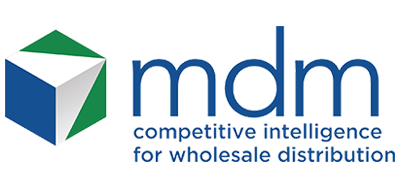In a cycle with slowing demand and increased pricing pressure, James Dorn of the Dorn Group and I outline Active Category Management as a timely year-end strategy in our latest QuickTake conversation. It’s one of our Profitability Playbook series, where we have already discussed holistic pricing strategy to grow both top-line revenue and margin, ways to leverage data analytics to increase profits, and three tried-and-true profit levers — inventory, pricing and automation — to pull in the current environment.
There are two different mindsets at play currently across the channel, Dorn notes. Many distributors have seen double-digit growth with historic profit levels over the past three years that are now moderating, so they are largely focused on shoring up profitability. Manufacturers have weathered severe supply chain challenges over the same period, have invested in automation and other efficiencies, and now are growth-oriented. How do you reconcile these opposing mindsets and goals?

“We take the view of this is an ideal opportunity for category management teams to rise to the occasion, because they can bridge the gap between profitability from distributors and growth from manufacturers,” Dorn says. Active category management is about ensuring distributors are resourcing their category management teams to have continual focus and rigor around running the “normal” processes of category management, but layering in modern programs and twists to drive growth and profitability for both distributors and for their supplier partners.
Here are a few active category management elements discussed:
- Improve manufacturer incentive programs. There are ways to navigate price negotiations to create win-wins – through creative give-and-take across rebates, returned good authorizations, SKU conversion or growth commitment. It takes discipline.
- Create a tiered supplier program. With rebate profitability getting squeezed as demand decreases, tiers can be structured at the product category level to strategic, preferred and other categories, for example. Stronger focus on growth and back-end programs with strategics creates a win-win for diverse profitability-growth goals of partners.
- Finish the year strong. Make sure your team is capturing every dollar and claims from negotiated agreements by year-end. On the manufacturing side, work with distributors at 90-95% of projected goal, create stock orders to reach those goals. For distributors, it could be from 20% to 90% of profit through these back-end agreements.
MDM Podcast: A Category Management Deep Dive with Steve Gettleman (Aug. 2)
With about two months left in 2023, there’s still time to strengthen the bottom line, while teeing up a strong 2024 — in spite of slower demand trending. “You have to be able to have the teams, the processes, the rigor and these conversations with your manufacturers to improve some of these programs behind the scenes to where you can manage to a higher level of profitability,” Dorn says.
As a resource for distributors and manufacturers to enter 2024 with rock-solid business strategies, MDM is hosting a 5-hour virtual Data Analytics Summit on Dec. 6 from 10 a.m. to 4 p.m. ET. It will serve as a great end-of-year event for distributors and manufacturers to absorb the latest revenue growth strategies and tactics for deeper supplier and customer engagement. We’ll dive deep into customer-supplier stratification, cost-to-serve and market-level gap analysis, digital channel analytics, and more. Find registration and the agenda here.
Listen to the QuickTake conversation via the audio player above, and check out all of our podcasts via our library here.



